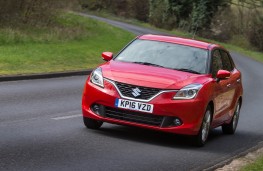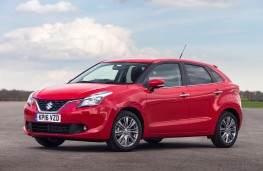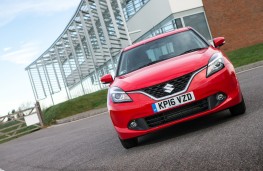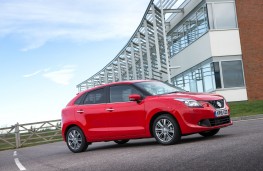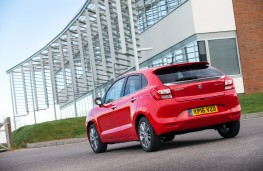A BLAST from the past is on the way with Suzuki reviving the Baleno name on a car that is out to rival the Ford Fiesta.
The Baleno is groundbreaking for the Japanese car firm and not only sits on a new lightweight platform but also sees the introduction of a 1.0-litre three cylinder petrol turbo engine.
It also marks the debut of a fuel-saving hybridised powertrain - the first time Suzuki has used such technology.
Priced from £12,999 the Baleno comes highly equipped with sat nav, Bluetooth connectivity and a rear view camera all included on the entry level SZ-T model.
Higher specification SZ5 versions - priced from only £500 more and that's for the hybrid - come with a digital display in the instrument panel, automatic emergency braking and adaptive cruise control - high end features not normally included on a supermini.
The pricing makes the Baleno highly competitive, not just compared to the Fiesta but also the likes of the Skoda Fabia and the VW Polo.
In the Suzuki line up the Baleno slots in above the Swift and is some six inches longer, creating a generous amount of leg room in the rear - more than you will find on some family saloons.
There is also a usefully proportioned boot of 320 litres complete with an underfloor compartment. Fold down back seats take cargo capacity up to 756 litres.
The dashboard is centred on a high resolution touchscreen and although the layout is smart there is still a lot of plastic in the trim.
USB ports are partly concealed under the dash which some may find fiddly but the Baleno's systems are fully compatible with smartphone technology including Apple CarPlay and MirrorLink.
Out on the road, the new 1.0-litre engine is impressive.
It's Suzuki's second Boosterjet turbo and follows on from the 1.4-litre four cylinder engine introduced in the sporty Vitara S SUV last year.
Not only is it lively and responsive with a distinctive three-pot rasp under acceleration it is also splendidly economical.
Suzuki claims 62.7mpg with emissions of 105g/km and we almost matched that clocking up an impressive average of 61.1 to the gallon on a coastal drive in Northern Ireland.
Top speed is a claimed 124mph with a 0 to 60 acceleration of 11.4 seconds with the turbo pushing the engine to 111ps. Dynamically, the Baleno is perfectly adequate and comfort levels are above the mark in this class of car.
Interestingly, the instrument panel display on the SZ5 models includes power and torque graphics and even a g-force meter - a bit of fun but hardly necessary. More relevant data such as fuel economy and general trip data is also included.
A brief drive in the hybrid - where the graphic display is modified to include powerflow information - showed the system's usefulness in traffic.
Suzuki classifies the system as a ‘mild hybrid', helping to reduce the load on the engine when moving off and also incorporating stop/start.
The hybrid is fitted with a 1.2-litre 90ps four cylinder petrol engine and the lower power is reflected in a 0 to 60 time of 12.3 seconds although emissions are reduced significantly to 94g/km which equates to an official fuel return of 70.6mpg.
Realistically we found the economy to be little different to that of the Boosterjet.
To keep weight down the Baleno comes only with an eight gallon fuel tank yet even so it should manage around 450 miles between fill ups.
The weight savings from Suzuki's new underpinnings enable the Baleno to tip the scales at under a tonne and that makes it one of the lightest cars on the market.
Both the 1.0 turbo and the 1.2-litre hybrid are five speed manuals while a six-speed automatic box is an option on the higher specification Boosterjet-powered car priced from £15,349.
All round this is a bigger than average car in this class, clean cut and has purposeful engines which have a good amount of appeal.
The Baleno will be arriving in June and comes almost 20 years after the previous model to bear the name was discontinued.
The new model is made in India at the Maruti factory and is part of a product offensive from Suzuki which is transforming its range with the likes of the new Vitara and the Celerio city car.
Next year will see the arrival of a mini-crossover which could see another name from Suzuki's past return with that one likely to be called the Ignis.

